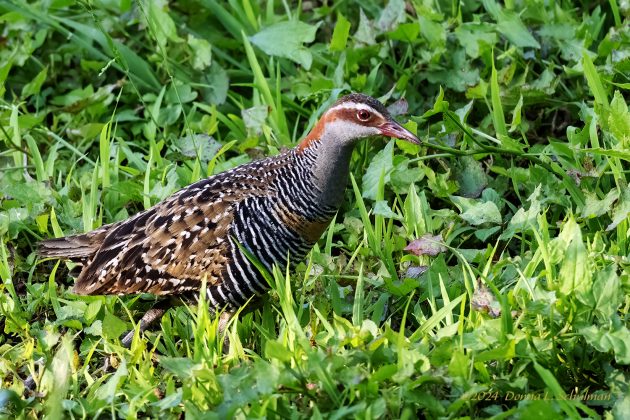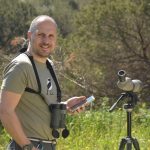
It’s a common birder story–stuck in a city on your way to another city with time to bird but little preparation on where to bird. I was in this situation two years ago, sitting in an airport hotel in Sydney, Australia, on my way early the next morning to Darwin. I was in Australia and wanted badly to see birds NOW, despite the jetlag, despite the pouring rain. A quick perusal of eBird showed that there was a park, Centennial Park, about a 20 minutes drive away and that there were birds there, so I put my camera together and grabbed my bins and called an Uber. The first question was where to tell the Uber driver to go and I had no idea. Centennial is a very large park and the eBird reports did not specify a specific place (unlike Central Park in NYC, where every few steps is a different hotspot). I spied some ponds in the southwest of the park and directed the driver there.
This turned out to be a good choice. There are a number of ponds, notably the Duck Pond, where you can find ducks (Pacific Black Ducks, Hardhead, Chestnut Teal, Australian Wood Duck also known as Maned Duck), cormorants (Little Pied Comorant, like the one above, Little Black, sometimes even Pied Cormorant), and many other water birds (Black Swan, Australian Pelican, Australasian Grebe, Australasian Swamphen, Australasian Darter, Dusky Moorhen, Eurasian Coot, and, if you’re luck, a rail). The rain had let up a bit, and I was able to take some photos, though if you look closely you can see some drops, like with the Silver Gull below. I was hoping that the photos would help me identify the birds because, being me, I had not done as much studying as I should have and what I had done did not stick.
It was fast getting dark and the rain was gearing up again to pouring status and I had no idea how I would get back to my hotel (for some reason, Uber was telling me the park was outside its jurisdiction), but I couldn’t leave the park because the white noisy birds were descending fast–Sulpher-crested Cockatoos and Corellas, Long-billed and Little–and I had to see them. My photos got grainer and murkier, but I was in heaven. (And, with the help of my hotel, I did eventually leave safely.)
Two years later, just last month, I traveled to Sydney for a longer visit. I was able to enjoy Centennial Park in the sun and discover more of its avian pleasures. I discovered with the help of Andrew Patrick, a local bird guide, Lachlan Swamp, just north of the Duck Pond. How did I miss this on my first visit? Lachlan Swamp is known for two things: Flying Foxes and Tawny Frogmouths.
The flying fox colony was surprisingly active when I visited early one morning. It’s made up of both Gray-Headed Flying Foxes (the majority of residents, numbering 5,000 to 45,000 according to the Centennial Parklands website) and Black Flying Foxes, a more tropical species (less than 1,000). The colony has been there since 2010, according to the website, and is signed and protected by park staff. It’s not unusual to see flying fox colonies in Australian parks, but to my North American eyes, this was magic. Leaving the park after dusk on another day (my AirBnb was close by, so no Uber worries), I saw the sky filled with their large silhouettes as they flew out from the swamp.
The second treasure in Lachlan Swamp was a nesting Tawny Frogmouth. That’s the nest, with a parent and fairly grown chick, on the cover photo. I went to see the Frogmouths several times during my visit, and each time they were in a different position, visible from the roped off entry way to the wooded section of the swamp, but seemingly not bothered by their admirers (which included a school group one afternoon). One early evening, the nest looked empty, but from the outside path I spotted a sweet Frogmouth nestled in the crook of a branch, probably waiting for complete darkness so it could hunt. Frogmouths were one of my most wanted Australian species, and though I saw several on my 2022 trip, I was thrilled to see them again.
Frogmouths are members of the Podargidae family, comprised of 16 species found in Australasia and Asia. (They were formerly grouped with nightjars and potoos, which seems right, and I believe these are still considered their closest relatives. Let me know if this has changed, please!) Tawny Frogmouth is one of three members of the genus Podargus, found in Australia and New Guinea; the other two are Marbled Frogmouth and Papuan Frogmouth (I saw the latter later in my Australia trip, thanks to Vent leader Scott Baker and Daintree River guru Murray Hunt). I was surprised at how many Tawny Frogmouths I saw during both of my Australia trips, they apparently have no problem nesting in public places accessible to everyone, the trick is to see them. Hooray for cryptic coloring!
But wait! There’s more. A local birder warned me against viewing the Tawny Frogmouth nest, telling me there was a Gray Butcherbird nesting nearby that was attacking him. I found the nest easily by watching the Butcherbird fly to it, but the bird did not seem bothered at all by my presence. In fact, he nicely posed for me later. Despite their powerful bills, topped off with a hook like our Shrikes, Gray Butcherbirds have apparently adopted to urban and suburban areas .When I ran into this local birder again and told him the bird was quite friendly, he concluded that the attack was personal.
Being the middle of October, spring, there were many nesting birds in the park. Here is a Magpie-lark on a lovely bowl nest in a tree overlooking one of the smaller ponds. Not a Magpie and not a Lark, Magpie-Larks are considered part of the monarch flycatcher family, but they have an insouciance all their own. I sometimes saw them in other parks hunting for food scraps at the food bars, reminding me of the warblers in New York City’s Bryant Park. This nesting pair periodically switched off incubation duty and though they are known, like their namesakes, for attacking people near their nest, they pretty much ignored me and my local birder friend (I guess it’s only the Butcherbird that attacks him).
Other birds were working on the nesting. My friend pointed out an Australasian Grebe couple I had observed together at the tip of a small piece of land jutting into the pond near the Magpie-larks. He thought their nest had failed. I wasn’t quite sure, they seemed to be doing something at that tip of land. Birdlife Australia says that Australasian Grebes may raise up to three broods in a season; their nests are floating mounds of vegetation anchored to a submerged branch. So maybe there’s hope.
There were two birds I had seen on eBird lists that I was anxious to see–Latham’s Snipe and Buff-banded Rail. Both would be life birds and cool birds to observe even if I had already seen them. A young, enthusiastic bird photographer named Nik gave me important location information, while showing me his excellent images of the rail, which, he told me, he had originally found. And while my observation of the snipe had to wait for another location and day, Nik’s directions allowed me to observe one of the two adult Rails, and maybe a baby–not really sure, it was there and then it wasn’t–that morning and later again in the late afternoon, when I got this photograph. What a beautiful rail! Like others of its family, it is known for its skulky, secretive marsh bird behavior, but there are enough eBird entries and photographs on social media that I think seeing it is possible with a little effort (and inside info if you can get it, which shouldn’t be hard, Aussie birders are very friendly).
Centennial Park is part of the Centennial Parklands complex and though the parks are full of people with bicycles, dogs, children, and other distractions (almost 31 million people a year, the website says), it’s also good birding. Technically, the park is in a suburb of Sydney (those it’s close to the business district and the airport); if you’re looking for eBird reports, look for Centennial Park in Randwick, New South Wales. My experience is that the good birding is at the south end, around the ponds. The park is surrounded by very busy streets, so look for buses that stop across the road from one of the south entrances and leave time to cross Darley Road. If you’re driving, there is parking in the park; the Centennial Parklands website gives information on that and other logistics.
So, if you’re on layover or passing through Sydney, I recommend a morning or afternoon birding at Centennial Park. Some for the Tawny Frogmouths, say hello to the Superb Fairywrens!























A bit of research always pays off. Nice post, Donna.
I have never birded Sydney – Donna, your post shows me that I should.